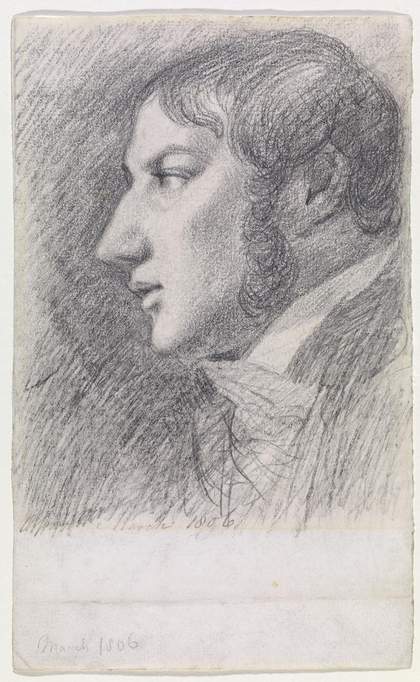
John Constable, Self-Portrait, 1806
Constable was born way back in 1776 – that’s almost 250 yeards ago – your great-great-great-great-great grandparents weren’t even born yet! He lived in Suffolk – which is a very green part of the English countryside with lots of farmland.
His parents expected him to join the family business and become a corn merchant, but he didn’t fancy counting corn forever – he wanted to paint pictures instead. His passion for painting led him to study at the Royal Academy Schools in London – a place where other artists like J.M.W. Turner also studied.
Despite moving to the city, his love of the English countryside remained central to his work. His paintings were not always appreciated by British audiences in his lifetime, but in the years since his death they have become well-loved icons of Britain's countryside.
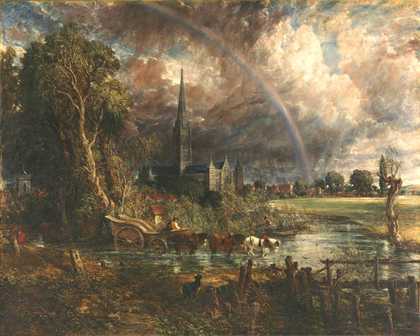
John ConstableSalisbury Cathedral from the Meadows exhibited 1831Oil on canvas1537 x 1920 mmTate T13896
Photo © Tate
What made him so special?
While Western European artists had traditionally painted landscapes only as backdrops for religious scenes or portraits of kings and queens, Constable was radical in turning his attention to ordinary life in the countryside – and making that the main event! His paintings celebrated rural, everyday life: muddy fields, rushing rivers, thatched cottages and hard-working farmers. His subjects were familiar, humble scenes that had often been overlooked by other artists.
What is your favourite thing to draw or paint?
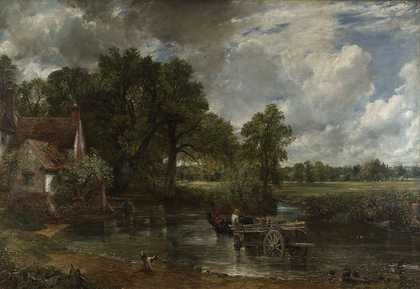
John ConstableThe Hay Wain 1821Oil on canvas
Courtesy The National Gallery, London
The Hay Wain is Constable’s most famous painting. It shows the mill that his family had operated for many decades, though at the time Constable painted it, the house was occupied by a local farmer. What even is a hay wain? It’s the wagon at the centre of the picture, used for carting dried grass around a farm. The farmworkers are making their way through the shallow waters of the pond towards the meadow the other side.
Fun fact - the mill and pond are still there today, and many people travel to visit the famous site because of this very painting!
Rural Suffolk, where he painted so much, is now called "Constable Country." Imagine having a whole place named after you just because you painted it really well!
While Constable was painting peaceful vistas and muddy ponds, Britain was being transformed by something called the Industrial Revolution. It was a time of massive change that saw the birth of factories, the building of important railways, and cities getting bigger. It changed the country forever! Some people found these changes a bit unsettling, so Constable’s chilled-out landscapes can be seen as nostalgic images of a threatened way of life.
Others believe there is a sense of uneasiness in his paintings, hinting at the way the world was changing dramatically.
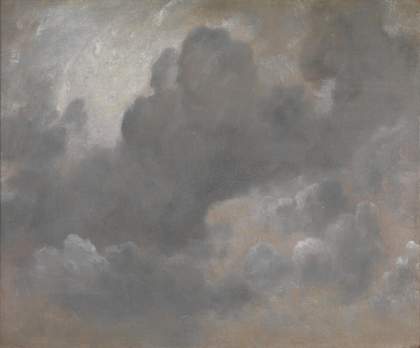
John Constable, Cloud Study, 1822
How was his style of painting revolutionary?
Not only did Constable choose subjects which other artists overlooked, his way of painting was also different. He often worked outside, or as the French Impressionists used to say – en plein air – to make small sketches, using oil paints to capture the fleeting effects of light on the landscape or variations in cloud formations.
Have you ever tried to draw or paint something which is moving? Do you think it would be difficult?
This was pretty radical for the time, when most artists in Great Britain would have painted in a studio. For Constable, being true to nature, rather than simply inventing the scene, was important. He often used fast and loose brush strokes in order to capture the moment in paint, and these impressionistic studies would then provide the material for larger artworks which he finished in his studio. This way of painting went on to influence French painters, including the Impressionists.
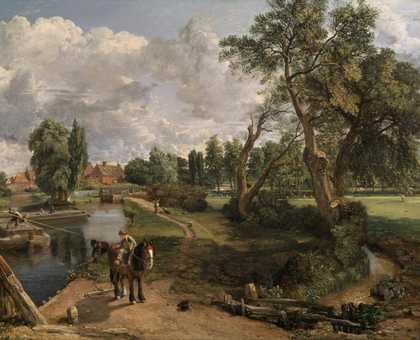
Today Constable is 100% considered one of the most important English painters of the 19th Century. Here’s the kicker though – during his lifetime hardly anyone truly appreciated his art at all! He actually found more success in France.
When The Hay Wain was shown in London in 1821 it didn’t even sell, but when he exhibited it in Paris just a few years later, the French people loved it! He even won a gold medal which was awarded by the King of France.
And finally, you should know that Constable had 7 children, so his house was always full of laughter and fun!

